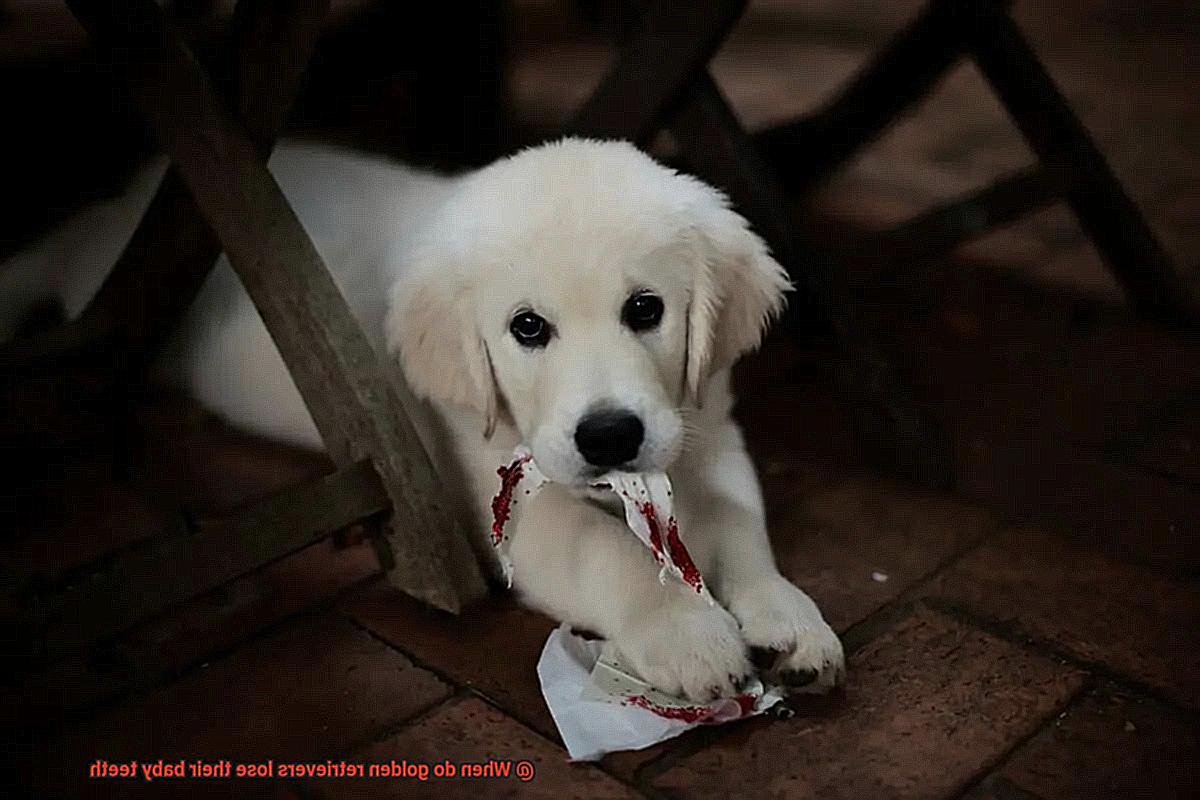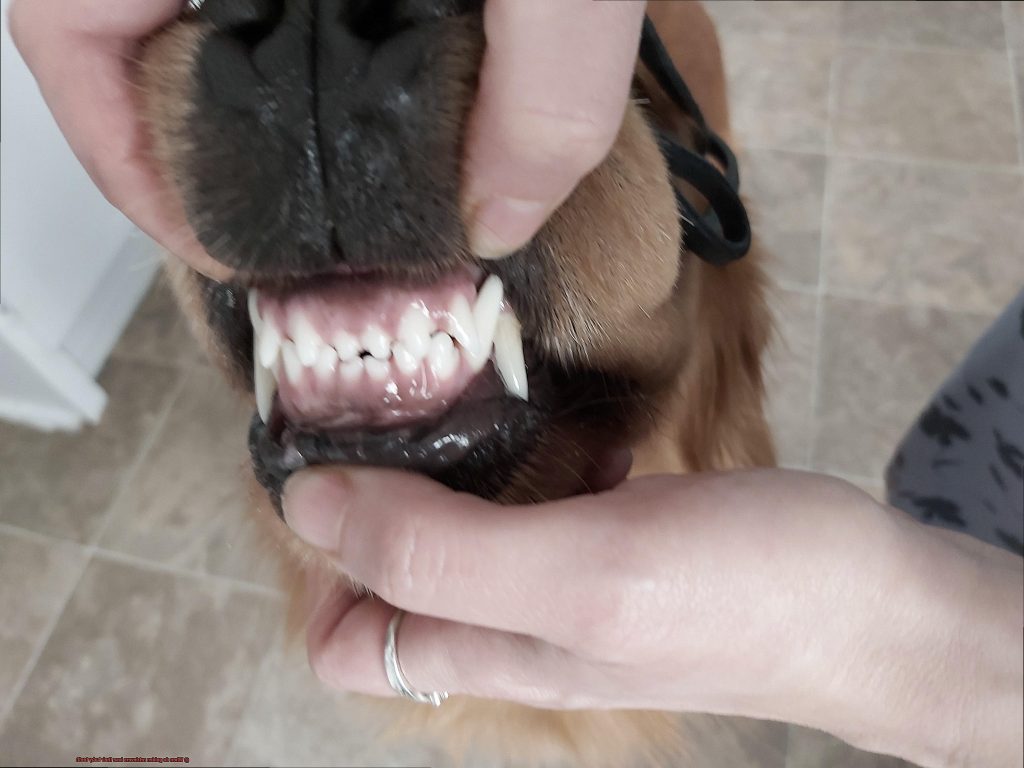Golden Retrievers are undoubtedly one of the most adored dog breeds, with their affectionate nature, intelligence, and unwavering loyalty. However, as with all living beings, they go through a series of changes as they grow. One significant milestone that every pet owner needs to be aware of is when their furry friend starts losing their baby teeth.
If you’re a Golden Retriever owner, you might be wondering about the timeline for your pup’s teeth development and when they will start losing their baby teeth. Fret not. We’ve got you covered. In this article, we’ll delve into the intriguing process of Golden Retriever teeth development and answer all your questions regarding their baby teeth falling out.
But before we get into the nitty-gritty details, did you know that dogs have two sets of teeth just like humans? Yes, indeed. They have deciduous or baby teeth followed by permanent or adult teeth. However, unlike humans whose tooth development occurs over several years, dogs’ tooth development happens at lightning speed. Therefore it’s crucial to identify when your Golden Retriever will lose its baby teeth so that you can monitor their oral health effectively.
So fasten your seatbelt and embark on an exciting journey into the world of Golden Retriever tooth development and discover when these adorable pups bid farewell to their baby teeth.
What Are Baby Teeth in Golden Retrievers?
Contents
If so, you may be curious about their baby teeth – also known as deciduous teeth. These tiny teeth are a vital part of your pup’s early development, allowing them to learn how to eat solid food and explore their environment through chewing.
Golden retrievers have 28 baby teeth in total, consisting of incisors, canines, and premolars. These delicate teeth play an essential role in your puppy’s overall health and well-being. Incisors are small front teeth used for biting and grooming, while canines are longer and used for tearing and shredding food. Premolars sit next to the canines and are used for grinding and crushing food.
As your golden retriever grows, their baby teeth will start to loosen and fall out as their permanent teeth begin to grow in. This process is called teething, which typically begins around three months of age and can last until they’re six or seven months old.
During the teething process, your puppy may experience discomfort and pain as their new teeth push through the gums. To help alleviate this discomfort, provide your puppy with safe chew toys that not only soothe sore gums but also redirect their attention away from inappropriate chewing behavior.
It’s essential to keep an eye on your golden retriever’s teething process as puppies tend to chew on anything during this time. Shoes, furniture, and electrical cords are all fair game for curious puppies. Providing them with appropriate chew toys can help prevent any damage to your home while also keeping your puppy safe.
When Do Golden Retrievers Start Teething?
Golden retrievers are one of the most beloved dog breeds out there, and for good reason. They are friendly, playful, and make excellent family pets. However, just like all puppies, golden retrievers go through a teething phase that can be challenging for both them and their owners. As an expert on this matter, I’m here to guide you in understanding when golden retrievers typically start teething.
Golden retrievers generally begin teething between three to four months old. During this period, they will lose their baby teeth and grow their adult teeth. As this process can be uncomfortable and painful for your furry friend, it’s crucial to provide them with the necessary support and care during this time.
You may notice your golden retriever chewing on objects more frequently during this teething phase. This is because their gums will be sore, and chewing can help alleviate some of the discomfort. Providing them with safe chew toys and bones is essential, as well as monitoring what they are chewing on to prevent any potential hazards.
Good oral hygiene is also important during this time. Brushing your golden retriever’s teeth regularly and providing them with dental chews or treats that help clean their teeth can help prevent any potential dental problems that may arise during this teething phase.
How Long Does the Teething Process Last for Golden Retrievers?
If so, you may be wondering how long the teething process will last. As an expert in pet care, I’m excited to share with you all that you need to know about this natural phase of your furry friend’s growth.
The teething process typically begins when a puppy is around three to four months old, which is when they start losing their baby teeth. During this time, the adult teeth begin to grow in, causing discomfort and excessive chewing behavior. The teething process lasts for about four to six months, although it may vary from one dog to another.
During this period, you may notice your little pup chewing on almost anything they can get their teeth on, including your furniture, shoes, and toys. To alleviate their discomfort, it’s crucial to provide them with appropriate chew toys that can help soothe their sore gums.
As the adult teeth grow in, the baby teeth will fall out naturally. You may notice some blood on your puppy’s toys or in their mouth during this process. However, it’s usually not something to worry about. But if you’re concerned about excessive bleeding or your puppy seems to be in significant pain, consult with your veterinarian.
It’s essential to maintain good dental hygiene during the teething process and encourage healthy chewing habits. This includes providing your puppy with appropriate chew toys and regularly brushing their teeth to prevent any buildup of plaque or tartar.
What Should I Expect During My Dog’s Teething Process?
But with growth comes teething, a process that can be quite uncomfortable for your furry friend. Understanding what to expect during your dog’s teething process can help you take care of them better and ensure they remain healthy and happy.
Typically starting at around three to four months of age, this phase can last up to six months. During this time, your pup will lose their baby teeth and grow in their adult teeth. However, as their adult teeth come in, you may notice some discomfort and pain, leading to excessive drooling, chewing, and biting.
To alleviate this discomfort, provide them with appropriate chew toys and bones designed for teething puppies. These toys will soothe their gums and prevent them from chewing on inappropriate items. While it’s common to notice some bleeding or swelling around their gums during the teething process, excessive bleeding or swelling warrants a visit to your vet.
Maintaining good oral hygiene during this time is crucial. Brush their teeth regularly and schedule dental check-ups with your veterinarian. This helps prevent potential issues with their adult teeth as they continue to grow in.
How Can I Help My Dog Through the Teething Process?
During the teething process, puppies can experience discomfort and pain as they lose their baby teeth and grow their adult teeth. So, how can you help your pup through this challenging time?

Firstly, providing your puppy with plenty of chew toys is crucial. Not only will it help relieve their discomfort, but it will also help loosen any loose baby teeth. Choose toys that are age and size-appropriate, as well as durable enough to withstand their strong jaws.
In addition to chew toys, cold or frozen treats can also provide relief during teething. These treats can numb their gums and provide a soothing sensation for their mouth. Try freezing toys or treats such as carrots or apples for a refreshing snack that will also help with teething.
Maintaining good dental hygiene is another essential step during teething. Regularly brushing your puppy’s teeth will prevent any buildup of bacteria or plaque, which can cause further discomfort and pain. Use a soft-bristled toothbrush and dog-friendly toothpaste to gently clean their teeth and gums.
Lastly, don’t forget to give your pup plenty of love and attention during this time. Teething can be a stressful experience for puppies, so providing them with reassurance and comfort can go a long way in easing their anxiety. Spend time playing with your puppy, cuddling them, and giving them positive reinforcement for good behavior.
Conclusion
To wrap it up, understanding when your Golden Retriever will start losing their baby teeth is crucial for any owner. This process is a natural part of their growth and development, and proper care and support are necessary during this time.
Typically, Golden Retrievers begin teething between three to four months old, which can last up to six months. During this phase, they may experience discomfort and pain as their adult teeth grow in, leading to excessive chewing behavior. To help alleviate this discomfort while also preventing any damage to your home, providing appropriate chew toys and bones designed for teething puppies is essential.
Maintaining good dental hygiene is also critical during the teething process. Regularly brushing your puppy’s teeth and providing them with dental chews or treats can help prevent potential dental problems that may arise during this phase.
As a responsible pet owner, it’s vital to keep a close eye on your Golden Retriever’s teething process. If you notice excessive bleeding or swelling around their gums or if they seem to be in significant pain, consult with your veterinarian immediately.
Remember that every Golden Retriever goes through the teething process naturally.









